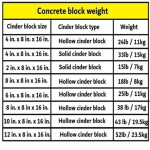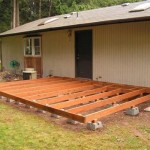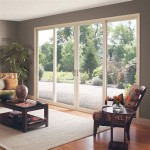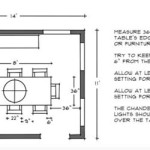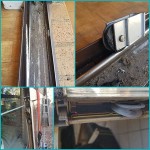```html
Vinyl Patio Deck Flooring: A Comprehensive Guide
Vinyl patio deck flooring has emerged as a popular choice for homeowners seeking a durable, aesthetically pleasing, and low-maintenance outdoor surface. Its versatility, cost-effectiveness, and resistance to various environmental factors make it a compelling alternative to traditional materials like wood and concrete. This article delves into the specifics of vinyl patio deck flooring, exploring its types, advantages, installation considerations, maintenance requirements, and potential drawbacks.
The term "vinyl patio deck flooring" encompasses a range of products, all sharing a common element: a core made primarily of polyvinyl chloride (PVC) or a composite material containing PVC. The surface layer, or wear layer, is often treated to enhance its durability, slip resistance, and aesthetic appeal. This wear layer can mimic the look of natural wood, stone, or other materials, offering a wide array of design possibilities.
Understanding the Different Types of Vinyl Decking
Within the broad category of vinyl patio deck flooring, several distinct types cater to different needs and preferences. Understanding these distinctions is crucial for making an informed decision.
Sheet Vinyl: Typically sold in rolls, sheet vinyl provides a seamless surface, minimizing potential leak points and creating a clean, uniform look. It’s a good option for smaller patios or areas where a seamless appearance is prioritized. Installation often requires professional expertise to ensure proper adhesion and avoid air pockets or wrinkles.
Vinyl Planks and Tiles: Available in various sizes and shapes, vinyl planks and tiles offer greater design flexibility and ease of installation compared to sheet vinyl. They often feature interlocking or adhesive systems for a relatively straightforward DIY installation. Damaged planks or tiles can be easily replaced without affecting the entire deck surface.
Vinyl Decking Boards: These boards are designed to mimic the look and feel of traditional wood decking. They are typically installed using similar methods as wood decking, with screws or hidden fastener systems. Vinyl decking boards offer superior weather resistance and require significantly less maintenance than wood.
Composite Decking with a Vinyl Capstock: While technically a composite material, many composite decking boards feature a protective vinyl capstock. This capstock enhances the board's resistance to staining, fading, and scratching, while also providing a more realistic wood-grain appearance. These options generally come at a higher price point but offer increased durability and longevity.
The choice between these types will depend on factors such as budget, desired aesthetic, installation skills, and the expected level of foot traffic and exposure to the elements.
The Advantages of Vinyl Patio Deck Flooring
Vinyl patio deck flooring offers numerous advantages that contribute to its growing popularity. These benefits extend beyond aesthetics and encompass practical considerations such as durability, maintenance, and cost.
Durability and Weather Resistance: Unlike wood, vinyl is inherently resistant to rot, decay, and insect infestation. It withstands moisture, UV radiation, and temperature fluctuations without warping, cracking, or splintering. This inherent durability translates to a longer lifespan and reduced maintenance costs compared to traditional decking materials.
Low Maintenance: Vinyl decks require minimal maintenance. Regular cleaning with soap and water is typically sufficient to remove dirt and debris. Unlike wood, vinyl does not need to be stained, sealed, or painted, saving homeowners significant time and money in the long run.
Slip Resistance: Many vinyl decking products feature textured surfaces or anti-slip coatings that provide enhanced traction, even when wet. This is particularly important in areas prone to moisture or heavy foot traffic, contributing to a safer outdoor environment.
Aesthetic Versatility: Vinyl patio deck flooring is available in a wide range of colors, patterns, and textures, allowing homeowners to create a customized outdoor space that complements their home's architecture and personal style. Manufacturers are increasingly adept at replicating the look of natural wood and stone, offering aesthetically pleasing alternatives to traditional materials.
Cost-Effectiveness: While the initial cost of vinyl decking may be slightly higher than some wood options, its long-term cost-effectiveness is significant. Reduced maintenance requirements, a longer lifespan, and resistance to damage translate to lower overall expenses over the deck's lifetime. In addition, the ease of installation for some types of vinyl flooring can reduce labor costs.
Sustainability: Many vinyl decking products are made from recycled materials, contributing to a more sustainable construction practice. Furthermore, the longevity of vinyl decking reduces the need for frequent replacements, minimizing waste and resource consumption.
Installation Considerations for Vinyl Decking
Proper installation is crucial for ensuring the long-term performance and appearance of vinyl patio deck flooring. While some types of vinyl flooring are relatively easy to install, others require professional expertise. The following considerations are essential for a successful installation.
Substrate Preparation: The substrate, or the surface beneath the vinyl flooring, must be clean, dry, and level. Uneven or unstable substrates can lead to issues such as warping, cracking, or premature wear. For concrete patios, thorough cleaning and patching of any cracks or holes are essential. For decks with existing wood framing, ensure that the framing is structurally sound and free of rot or decay.
Proper Drainage: Adequate drainage is essential for preventing water accumulation beneath the vinyl flooring. Proper slope and drainage systems should be in place to ensure that water flows away from the deck surface and does not pool in low-lying areas.
Expansion and Contraction: Vinyl materials expand and contract with temperature fluctuations. It is crucial to allow for this movement during installation to prevent buckling or cracking. Follow the manufacturer's recommendations for spacing and fastening to accommodate expansion and contraction.
Fastening Methods: The appropriate fastening method will depend on the type of vinyl flooring being installed. Sheet vinyl typically requires adhesive, while vinyl planks and tiles may use interlocking systems or adhesive. Vinyl decking boards are typically fastened with screws or hidden fastener systems. Ensure that the fasteners are compatible with the vinyl material and the underlying substrate.
Professional Installation: While some types of vinyl flooring are suitable for DIY installation, complex projects or those requiring specialized tools may benefit from professional installation. Experienced installers can ensure that the flooring is properly installed, minimizing the risk of future problems.
Local Building Codes: It's important to check local building codes for any specific requirements related to deck construction and vinyl flooring installation. Compliance with these codes is essential for ensuring the safety and legality of the project.
Ventilation: For elevated decks, proper ventilation beneath the deck is crucial to prevent moisture buildup and potential rot. Ensure adequate airflow to minimize the risk of damage to the deck framing and underlayment.
Acclimation: Allow the vinyl decking material to acclimate to the outdoor temperature and humidity for a specified period before installation. This will minimize expansion and contraction issues after installation.
Even with careful planning and execution, understanding the potential drawbacks of vinyl decking is essential for realistic expectations.
Heat Retention: Darker colored vinyl decking can absorb significant heat from the sun, making it uncomfortable to walk on barefoot during hot weather. Choosing lighter colors or utilizing shade structures can help mitigate this issue.
Potential for Scratches and Dents: While vinyl decking is generally durable, it can be susceptible to scratches and dents from sharp objects or heavy furniture. Using protective mats or pads under furniture can help prevent damage.
Fading Over Time: While vinyl decking is resistant to fading, some fading may occur over time, particularly in areas exposed to direct sunlight. Choosing high-quality, UV-resistant products can minimize fading.
Appearance: While vinyl decking has improved significantly in recent years, some individuals may still find that it lacks the natural warmth and character of real wood. However, the aesthetic benefits of reduced maintenance often outweigh this perceived drawback.
Repair Challenges: Depending on the type of vinyl flooring and the extent of the damage, repairs can be challenging. While individual planks or tiles can often be replaced, repairing larger areas of damaged sheet vinyl may require replacing the entire sheet.
```
Tufdek Residential Waterproof Vinyl Decking Photo Gallery

Best Decking Material Wood Vinyl Or Composite Deck Options

2024 Outdoor Flooring Trends 10 Ways To Upgrade Your Space

10 Solid Alternatives To Wood Decking Deck Flooring Outdoor Vinyl

Deck Gallery Hnh And Porch Llc 443 324 5217

Outdoor Flooring Options For Style And Comfort 10 Ideas 2024

Vinyl Decking The Waterproof Deck Solution Since 1974 Duradek

High Traffic Londeck Commercial Outdoor Vinyl Floor Rolls

Vinyl Flooring For Outdoor Patio Https Www Otoseriilan Com

Vinyl Deck Material Choices Boards Or Flooring

